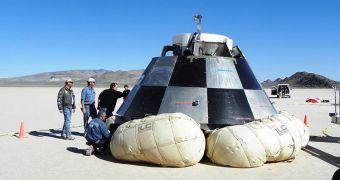During an assessment held on August 23, called the Integrated Systems Review (ISR), engineers at the Boeing Company presented the latest designs for their CST-100 spacecraft, its Atlas V carrier rocket, and associated ground control and mission operations systems.
The review was conducted in order to support Boeing's inclusion into the American space agency's Commercial Crew Integrated Capability (CCiCap) initiative, which funds the development of private spacecraft that can take astronauts to low-Earth orbit.
The company is interested in using its manned capsule to provide spaceflight transportation services for both government and commercial customers. The Atlas V rocket it plans to use is built by the United Launch Alliance, a partnership between Boeing and Lockheed Martin.
During the ISR, Boeing officials also presented aspects related to mission safety and assurance. These are critically-important for obtaining the NASA certification required to conduct human spaceflights.
“The ISR established a firm baseline configuration that will allow our team to push forward with the final vehicle design,” explains the Vice President and Commercial Programs Manager at Boeing Company, John Mulholland.
“We hope the rigor of our design and development process, and our outstanding team of suppliers will help position the CST-100 as one of the next crew transportation vehicles to the space station and other low Earth orbit destinations,” he goes on to say.
The ISR, which was held in Houston, Texas, was attended by technicians working for the NASA Commercial Crew Program (CCP). Their role was to provide advices and comments, based on more than 50 years of human spaceflight experience at NASA.
“All of our industry partners are gearing up to push their human spaceflight technologies further than ever before so America can have its own crew transportation system around the middle of the decade,” NASA CCP program manager Ed Mango explains.
“This review was just the first of many exciting and valuable milestones Boeing is expected to complete during its funded partnership with NASA,” he concludes.

 14 DAY TRIAL //
14 DAY TRIAL //